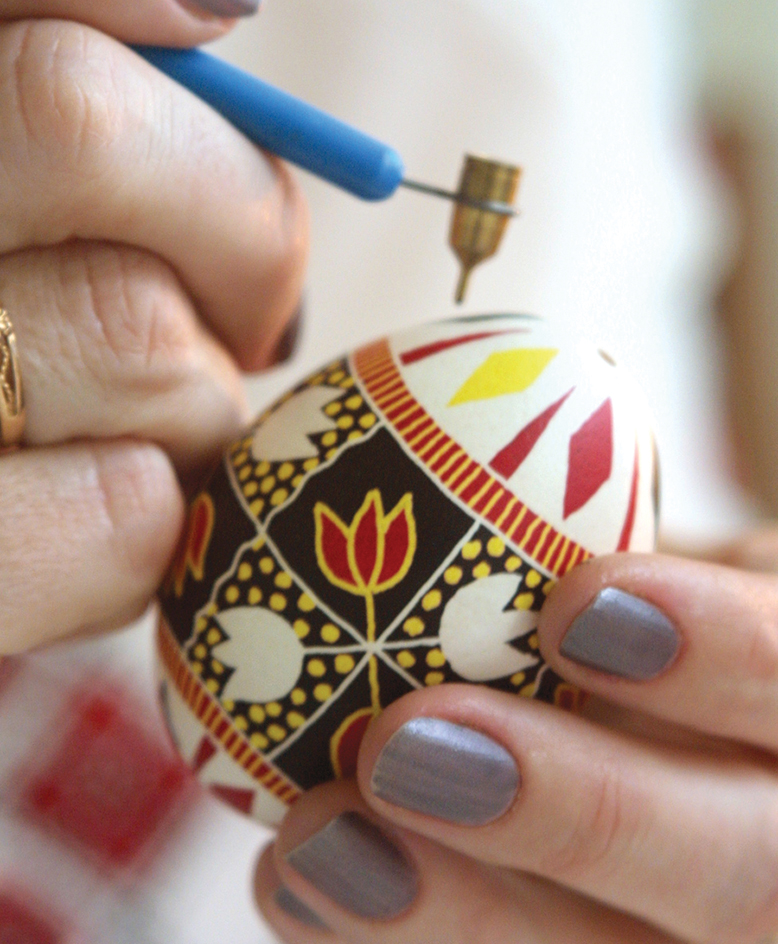Egg is a special structure made by female animals. An egg can develop into a new individual. Birds reproduce by laying eggs, as do many reptiles, fish, insects, and other animals.
An egg develops from a female sex cell, called an egg cell or ovum. In most living things, an egg cell will only develop into a new individual after joining with a male cell, called sperm. The sperm and the egg cell join in a process called fertilization. In some animals, such as ants and termites, the egg cell can develop into a new organism without being fertilized by a sperm.
A fertilized egg cell develops into an embryo. In humans and most other mammals, the embryo grows inside the female. In most other animals, the fertilized egg cell develops outside the parent’s body, in a structure called an egg. The egg may have a special covering that encases and protects the developing embryo. The egg also carries a supply of food for the developing embryo.
Animal eggs vary widely in size. They range from a cell that cannot be seen without a microscope to a hard-shelled container larger than a fist. Larger animals tend to produce bigger eggs, but this is not always the case.
Animals also differ in the number of eggs they produce. Oysters, for example, lay eggs that are eaten by many forms of aquatic life. Few of these eggs survive to become adults, but an oyster produces as many as 500 million eggs in a year. Animals whose young have a good chance of survival generally lay fewer, larger eggs. They often protect the eggs carefully. For example, the great spotted kiwi of New Zealand lays just one egg each year. The egg weighs about one third as much as the mother. Both parents guard the egg until it hatches.
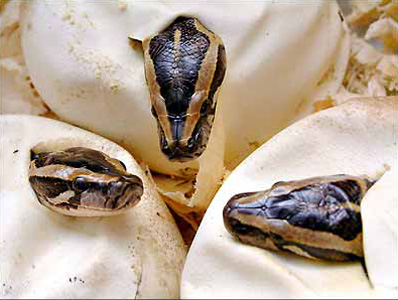
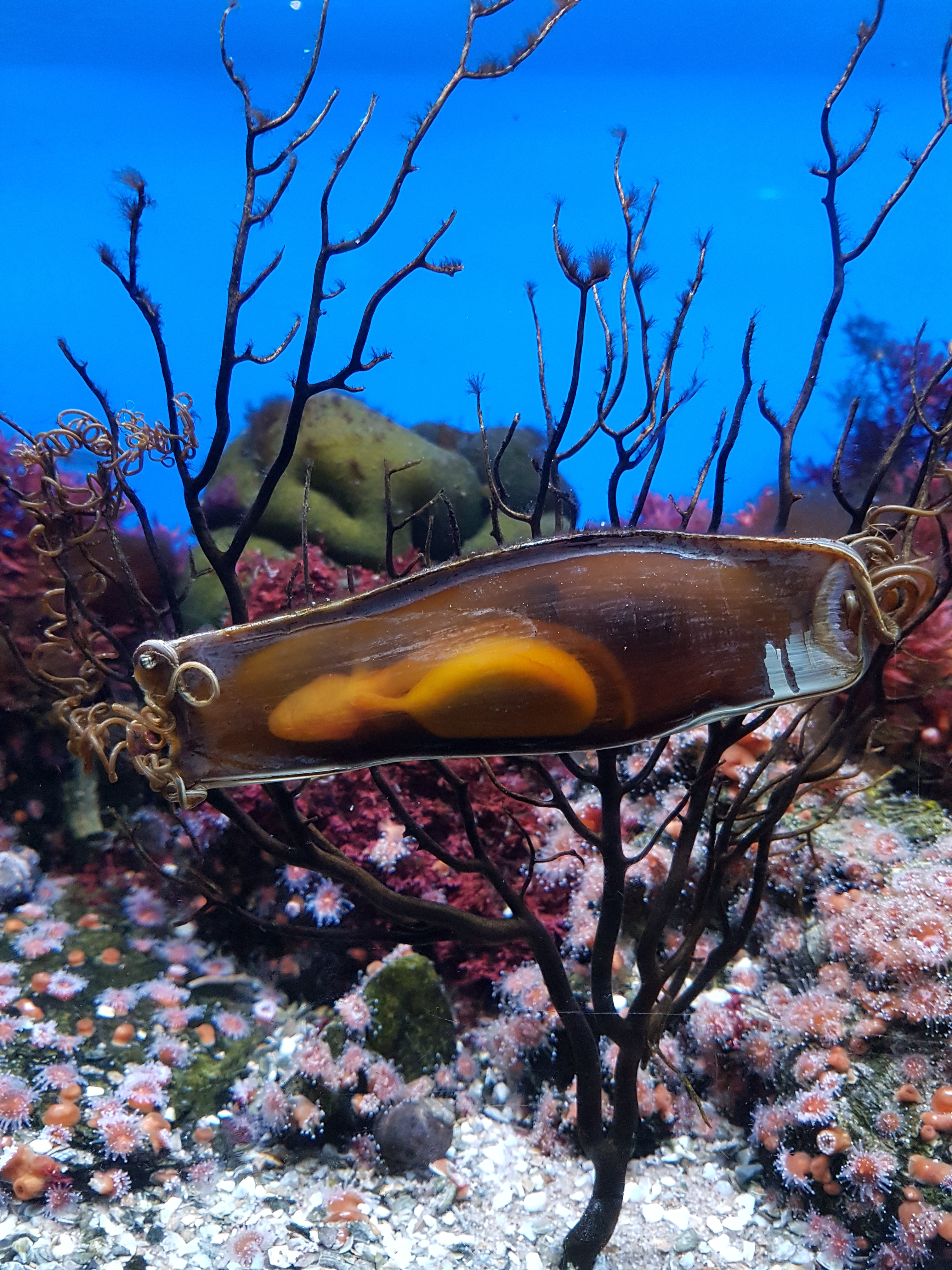
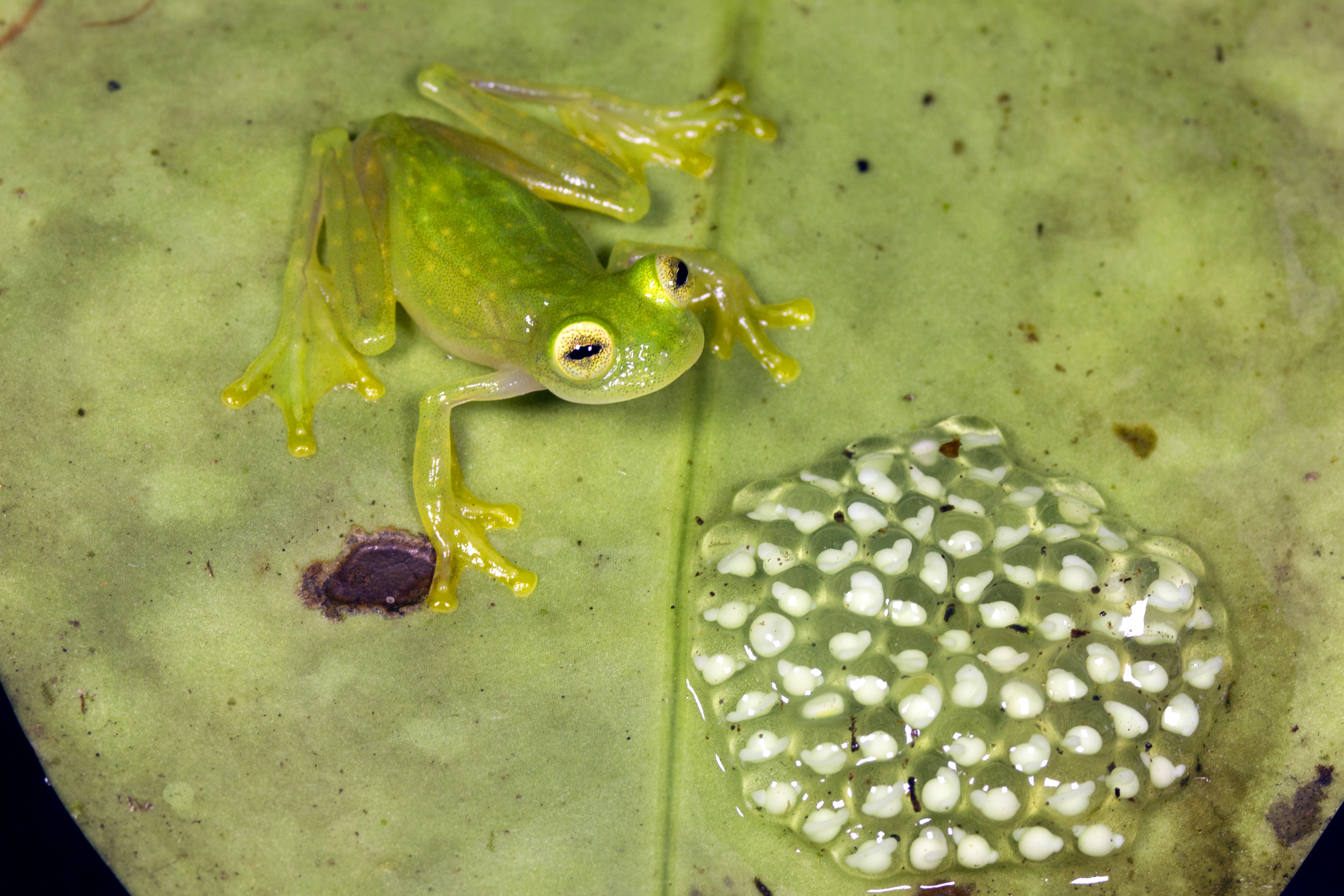
Kinds of eggs
The features of eggs have evolved over time so that the eggs of each animal are suited to its lifestyle and environment. Earthworms lay eggs enclosed in capsules filled with a nourishing, milky fluid. A female water-flea produces summer eggs, which she carries in a special pouch on her back. She also produces winter eggs, which are enclosed in protective capsules. Moths, butterflies, and other insects usually lay their eggs in clusters. They may lay them on the ground, on the leaves or stalks of plants, or in water.
Fish eggs.
Fishes may lay large numbers of eggs. A sturgeon, for example, lays about 7 million eggs in a year. Some fish eggs are heavy and sink to the bottom of the stream, lake, or ocean. Other kinds of fish eggs are light and transparent and float together in a mass on the water. Sharks and skates lay eggs in leathery cases that can often be found on an ocean beach.
Amphibian eggs.
Amphibians also lay their eggs in water, even though the adults often live on land. The American toad produces as many as 6,000 eggs at a time in two long strings of jelly. Frogs and salamanders also produce large, jellylike masses of eggs.
Reptile eggs.
Unlike fish and amphibians, reptiles can lay eggs with shells that will not dry out on land. As a result, reptiles can live away from water. Most reptiles lay eggs with a white, leathery protective shell. They often bury the eggs in the ground for protection.
Mammal eggs.
Some kinds of mammals, called monotremes, also lay eggs. They are the duck-billed platypus and the echidna. In all other mammals, including humans, the young develop inside the mother.
Bird eggs
are the best known kind. Bird eggs have hard shells for protection.
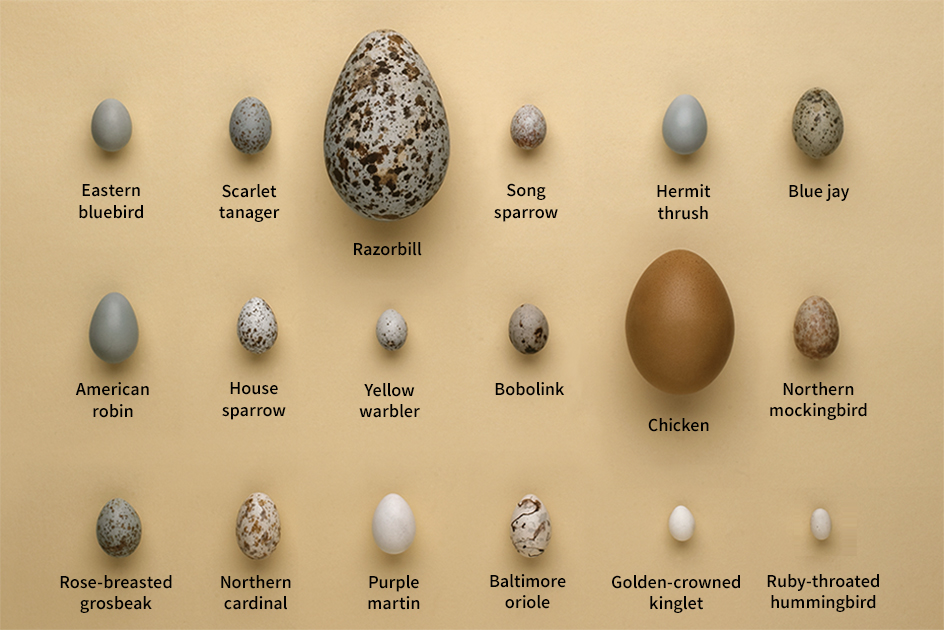
Birds provide significant care for their eggs. One of the most important ways is through incubation—that is, sitting on the eggs to warm them. Incubation helps a chick develop quickly and safely inside the egg.
Most birds build a nest for their eggs. A nest may be a shallow scrape on the ground or a well-woven basket hanging from a tree branch. Other birds lay their eggs in holes in trees, on rock ledges, or on sandy beaches.
The eggs a bird lays at one time are called a clutch. Small songbirds generally lay 5 or 6 eggs in a clutch, whereas a mallard duck can lay up to 15. Birds in tropical regions tend to have smaller clutches than birds living in cooler climates. However, a warmer climate enables tropical birds to have more clutches per year.
Bird eggs can have a wide range of shell colors. The eggs are naturally white unless they contain some pigment (coloring substance). Among birds whose eggs lie well hidden within the nest, the eggs are usually not pigmented. Such birds include those that are nocturnal (active only at night), such as owls and nightjars, and birds such as woodpeckers that lay their eggs in holes.
Some birds lay their eggs on the ground, where the eggs might be seen by predators. These birds generally lay eggs colored to match the nest or the ground. Patterns of spots, lines, or blotches on the egg can also help it blend in with its background. The eggs of the piping plover, for example, blend into the sand well in which they are laid. A person walking on a beach could walk right over a clutch without seeing them.
Ostriches, on the other hand, lay light-colored eggs that are easily visible on the sandy soil. Many gulls also lay eggs that are much lighter than the surrounding rocks or sand. Scientists do not fully know why these eggs lack protective coloration. Some scientists think that darker eggs might get too hot in the sun, killing the chick growing inside. Light-colored eggs, by contrast, reflect more sunlight. They do not retain as much heat.
Some other birds’ eggs also do not blend in with their surroundings. American robins and many other songbirds lay bright blue or blue-green eggs. Many of these birds nest in shrubs or trees, where protective coloring might not be as necessary. A group of birds called tinamous, native to Central and South America, lay bright glossy eggs that resemble glazed pottery. Scientists do not fully know what purpose such appearances serve.
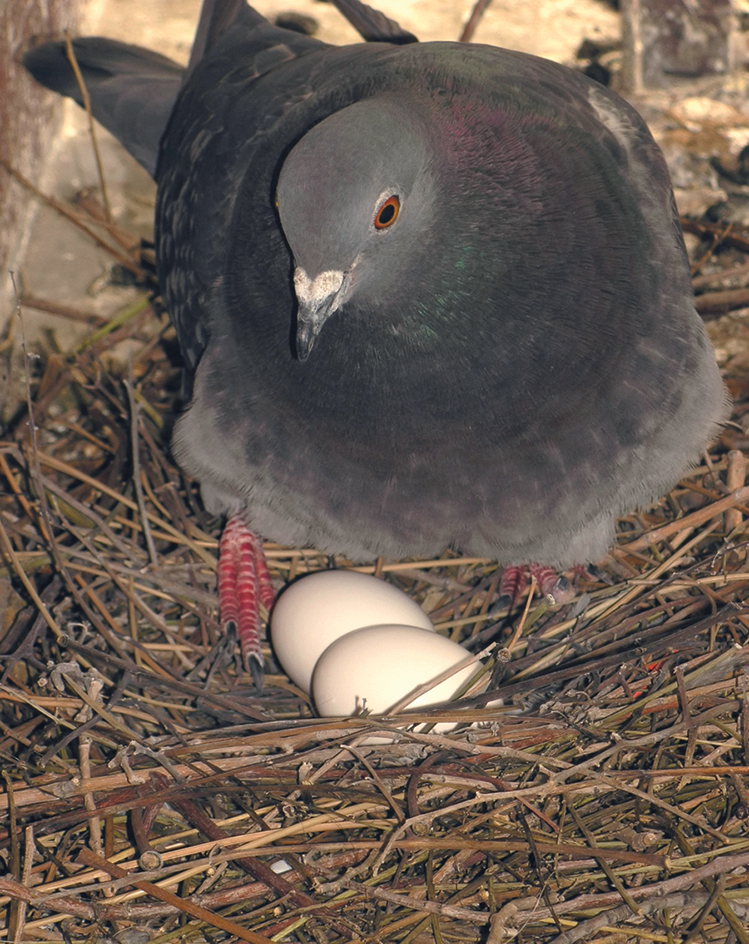
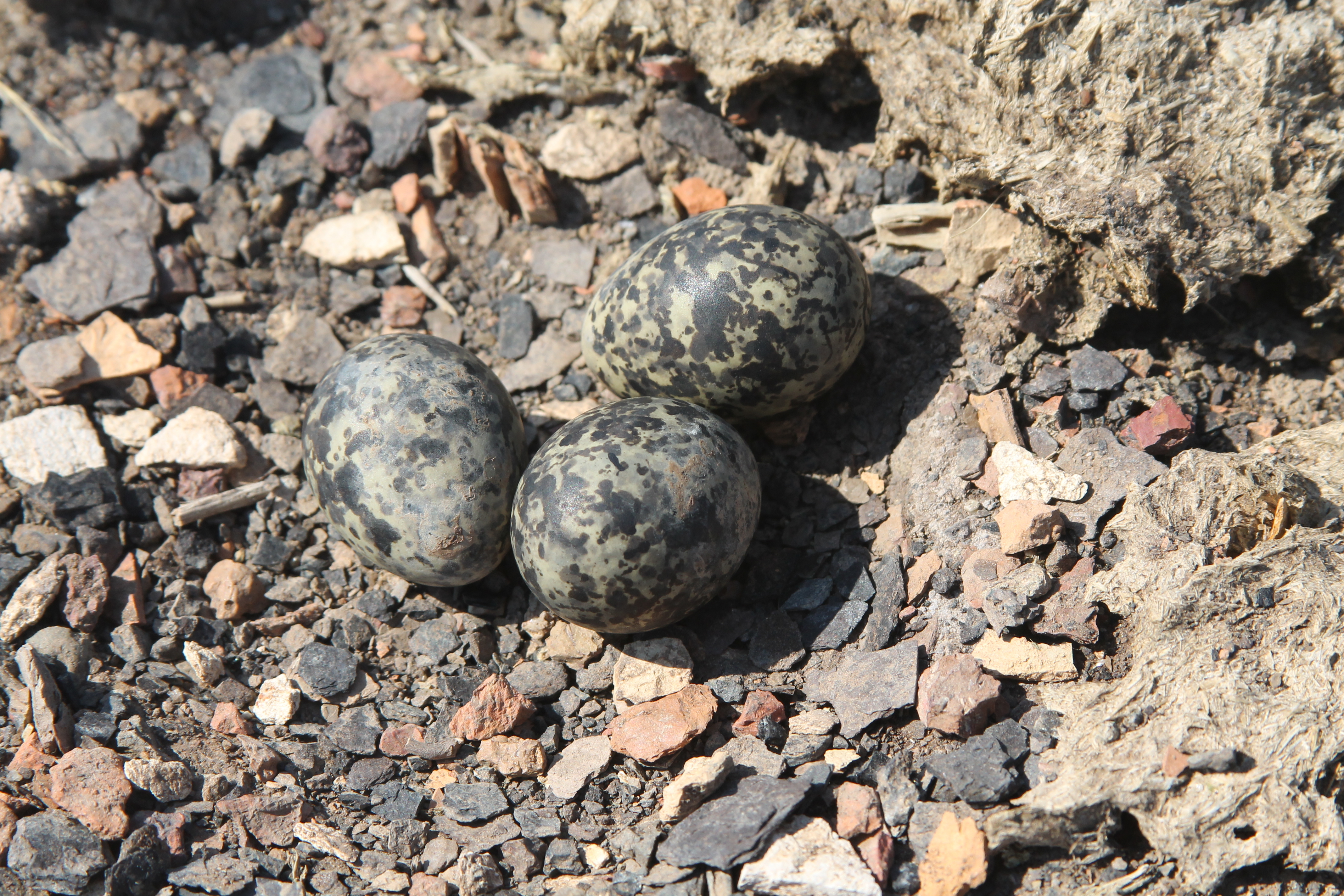
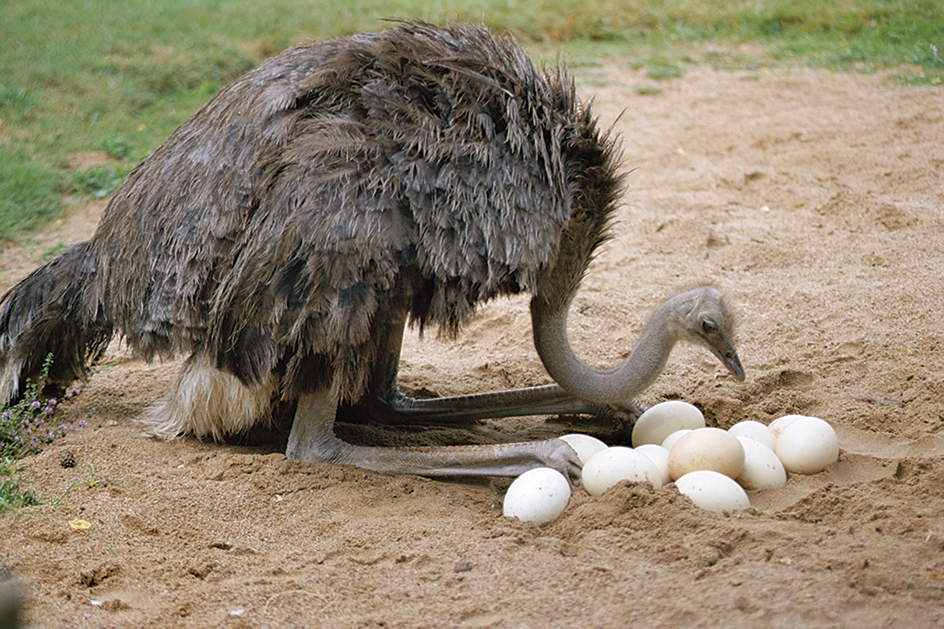
Dinosaur eggs.
Most scientists regard birds as the living descendants of dinosaurs, and dinosaur eggs resemble bird eggs in many ways. Like bird eggs, for example, dinosaur eggs have hard shells. The largest dinosaur eggs yet found are about 2 feet (60 centimeters) long. Scientists believe that large size and hard shells provided protection when animals began laying their eggs on the ground, instead of burying them. Scientists also have evidence that at least some dinosaurs cared for their eggs in nests, as do modern birds.
Parts of a bird egg
A bird’s egg has five principal parts. They are (1) the germ, (2) the shell, (3) the shell membranes, (4) the albumen, and (5) the yolk.
The germ
is the most important part of an egg. It is the fertilized ovum that develops into a young bird. Usually, the ovum must be fertilized before the rest of the egg develops. However, some birds, including chickens, will lay eggs that are not fertilized. The other parts of the egg provide food and protection for the growing bird.
The shell
consists mostly of the mineral calcium carbonate. This substance is interwoven with a network of proteins called the protein matrix that gives the shell strength. The shell consists of two main layers—an inner mammillary layer and an outer spongy layer. Eggshells have tiny pores that permit gases to pass back and forth. An eggshell also allows water to pass, but not enough to cause the egg to dry out.
Shell membranes
are two thin skins just inside the shell. Water and gases can pass through these skins. The membranes stabilize the egg’s contents and separate them from the shell. A space called an air cell forms between the shell membranes after the egg is laid. The air cell is usually found on the wider end of the egg.
The albumen
makes up most of the volume of a bird egg. It is semi-liquid and clear to somewhat cloudy. The albumen is often called the “egg white” because it turns white when cooked. The albumen protects the embryo and provides nutrition for the young bird.
The yolk
serves as the main source of food for the embryo in later stages of development. The yolk is a yellow substance enclosed in a sac called the vitelline membrane. The yolk is lighter than the albumen and so usually floats above the center of the egg. Within the albumen is a white, twisted, ropelike structure called the chalaza. It helps keep the yolk in the middle of the egg and prevents the yolk from breaking apart against the eggshell if the egg is moved. The germ is attached to the yolk. The chalaza also protects the embryo by holding it so that it is surrounded by soft albumen.
Development of a bird egg
A bird egg takes 21 to 25 hours to develop inside the female, regardless of its size. No bird can normally lay more than one egg in a day.
The egg begins development as an ovum in the female ovary (see Ovary). Each ovum is nestled in a sac called a follicle. Several ova (the plural of ovum) are present in the ovary. As laying time approaches, an ovum grows in size attached to a yolk. When the yolk reaches full size, the ovum breaks out of the follicle and is fertilized if sperm are present. The egg then travels down a tube called the oviduct. During this time, the albumen surrounds the yolk and shell membranes are added. After the egg enters the uterus, the shell is produced around the egg and then pigmented. Shell production takes about 12 hours, after which the egg is laid through an opening called the vagina. By this time, a fertilized ovum has already begun to develop into an embryo.
Once laid, the egg is incubated. Small songbirds often incubate their eggs for 12 to 14 days. The incubation period for chickens is 21 to 22 days. Large birds, such as eagles and swans, can require up to 36 days to incubate their eggs. A fully developed chick hatches from the egg having consumed all of the albumen and yolk. The chick pecks at the shell until the egg breaks open. A chick often has a specialized egg tooth on its bill. This sharp tooth helps break the eggshell from the inside. The egg tooth disappears soon after the chick has hatched.
Eggs as food
People eat the eggs of many birds, reptiles, amphibians, and fish and of some invertebrates (animals without backbones). The eggs of fish, sea urchins, and shellfish are called roe. People eat many kinds of roe, especially shad, salmon, and sturgeon roe. People traditionally reserve the term caviar for sturgeon roe from the Caspian and Black seas. Caviar is a prized and expensive delicacy.
Chicken and duck eggs are an important part of the diet in many countries. In certain regions, the eggs of other birds are commonly eaten, including the eggs of emu, goose, guineafowl, ostrich, quail, and turkey.
Chicken eggs provide an excellent source of protein, iron, and phosphorus. Eggs are a rich source of vitamins A and D and of B vitamins. The yolks of chicken eggs also contain a fatty substance called cholesterol. Too much cholesterol in the diet can be harmful to those who are at risk of cardiovascular disease.
In addition to being eaten without accompaniment, eggs have many important culinary uses. They are used to prepare omelets, quiches, custard, salads, and baked goods. Egg yolks are used in cooking to produce an emulsion—that is, a mixture of liquids that do not ordinarily mix well. Common emulsions made with egg yolk include mayonnaise and some salad dressings. Cooks use egg whites to make a foam in certain recipes, especially when stirred rapidly or whipped.

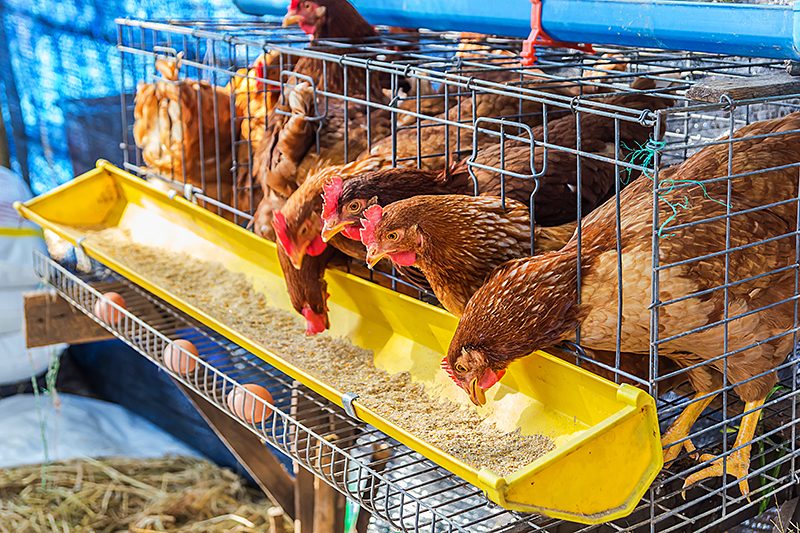
White and brown eggs have the same food value. The United States Department of Agriculture classifies consumer eggs as Grade AA, A, or B. These standards are based on the condition of the shell, yolk, and white and on the size of the air cell.
People in Japan, China, and Mexico are among the world leaders in egg consumption. According to the American Egg Board, the average person in the United States eats about 250 eggs per year. About 75 of these come from manufactured egg products, rather than being whole eggs from the shell.
Chicken egg production

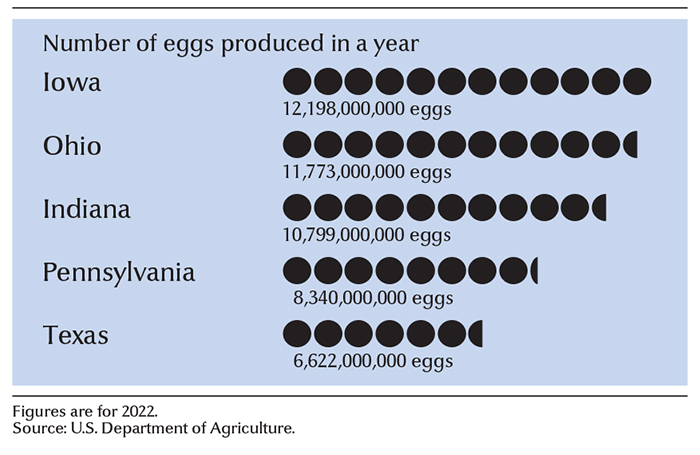
In Europe and North America, people concerned with the welfare of animals have raised awareness of the ethics of modern egg production. They debate the ethical implications of raising millions of chickens in huge “factory farms.” In such facilities, birds are confined to cramped indoor cages for their entire lives. More people are choosing to buy eggs from producers that keep their chickens in cage-free enclosures. Eggs from chickens fed an organic or other special diet are also popular (see Organic food).
Other uses for eggs
Chicken eggs are also used to produce vaccines and for other uses in the biological laboratory. Vaccines are produced by growing disease-causing germs inside eggs. These germs stimulate the body’s immune system to fight a particular infectious disease.
Some animal feeds contain eggs. Eggs are also used in the production of some adhesives, cosmetics, shampoos, and specialty inks and paints.
Eggs are a common symbol in religious traditions and in art. In many cultures, an egg can symbolize Earth, fertility, rebirth, and the cycle of life. Such symbolism is shown in the tradition of coloring eggs for Easter celebrations. A goose that lays golden eggs serves as an important character in popular fables and folktales. Goldsmith Peter Carl Fabergé produced beautifully crafted Easter eggs of gold and precious gems for Russian czars in the early 1900’s.
